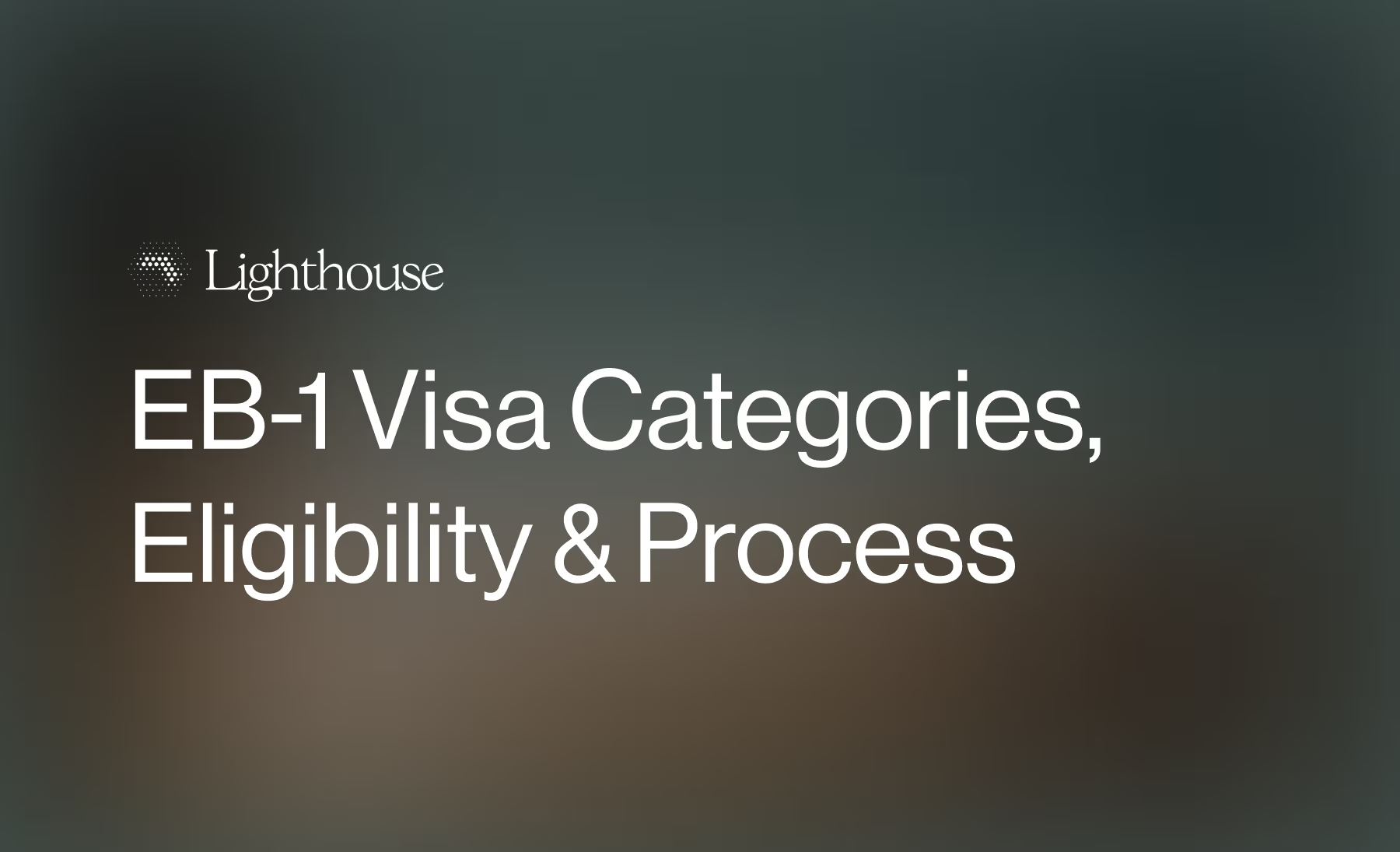Form G-28 Explained
Understand Form G-28, who completes it, how it authorizes legal representation, and what to do when updating or withdrawing an immigration attorney.


When you work with an immigration attorney or accredited representative, Form G-28 tells the U.S. government that they are authorized to act on your behalf. This guide explains what the form is, who must complete it, how to file it correctly, and what to do if you need to withdraw or update representation.
What is Form G-28
Form G-28, officially titled Notice of Entry of Appearance as Attorney or Accredited Representative, authorizes a legal representative to appear before U.S. immigration agencies on behalf of an applicant, petitioner, or respondent. It is required in nearly all immigration matters handled by U.S. Citizenship and Immigration Services (USCIS), U.S. Immigration and Customs Enforcement (ICE), or the Executive Office for Immigration Review (EOIR).
The form tells the U.S. government who is authorized to receive case notifications, respond to requests for evidence, and communicate with immigration officers. Without a completed Form G-28, an attorney or accredited representative cannot officially represent you in your immigration case.
You can find the official version and instructions on the USCIS website.
Legal purpose and background
Form G-28 is required under federal regulations that govern who may practice immigration law and how they must notify the government of their representation. It ensures that only qualified individuals—licensed attorneys or accredited representatives—can access case information and act on behalf of clients.
Filing a G-28 protects your privacy. It directs all official correspondence, such as receipt notices, decisions, or requests for additional information, to your authorized representative instead of directly to you. It also helps the Department of Homeland Security (DHS) confirm that your legal representative meets eligibility requirements to practice law before its agencies.
Who must complete Form G-28
A Form G-28 must be completed and signed by both the legal representative and the client. The representative fills out the form with their full name, bar number, contact information, and details about their eligibility to represent clients in immigration matters. The client—whether an applicant, petitioner, or respondent—must sign to confirm consent.
Eligible representatives
Only certain individuals may file Form G-28:
- Attorneys licensed to practice law in the United States and in good standing with a state or territorial bar.
- Accredited representatives recognized by the Department of Justice (DOJ) through the Recognition and Accreditation Program. These representatives must work for recognized nonprofit organizations authorized to provide immigration legal services.
Law students, law graduates, or nonprofit staff may not file Form G-28 unless they are officially accredited or supervised under specific EOIR rules. Unlicensed preparers or interpreters cannot use this form to represent clients.
When and where to file Form G-28
Filing with USCIS
When you file an immigration application or petition—such as Form I-129 (Petition for a Nonimmigrant Worker), Form I-485 (Application to Register Permanent Residence or Adjust Status), or Form I-765 (Application for Employment Authorization)—you attach a completed Form G-28 to notify USCIS of your legal representation. If representation begins after the initial filing, your attorney can submit Form G-28 separately through your USCIS online account or by mail.
Filing with ICE
For enforcement or removal proceedings handled by U.S. Immigration and Customs Enforcement, your attorney or accredited representative files Form G-28 directly with the local ICE office managing your case. This includes matters involving detention, deportation, or supervision.
Filing with EOIR
For cases before the immigration court or the Board of Immigration Appeals (BIA), Form G-28 must be filed following the EOIR Policy Manual. The representative submits the form to the specific court handling the case or to the BIA for appeals.
Electronic vs. paper submission
USCIS accepts electronic submission of Form G-28 through the myUSCIS account portal. Attorneys and accredited representatives can link their accounts to clients’ cases, receive electronic notifications, and upload supporting documentation.
For paper filings, both the representative and the client must sign by hand. USCIS will reject any unsigned or incomplete form. When submitting by mail, make sure the form’s edition date and page numbers are visible and consistent across all pages.
Electronic filing typically provides faster confirmation of representation, more reliable delivery of notifications, and easier access to case updates.
G-28 edition date and processing time
Every USCIS form includes an edition date printed at the bottom of each page. The G-28 edition date determines whether the form version is still valid. You can check the current accepted edition on the official USCIS G-28 page. Using an outdated edition can result in rejection.
Form G-28 does not have a separate adjudication or waiting period. Once USCIS receives it with your immigration form, it becomes part of your case record. The agency updates its system to reflect your representative’s appearance after receipt.
How to withdraw or update a G-28
Sometimes representation changes during an immigration case. The term withdraw G-28 means that the attorney or accredited representative is formally ending their appearance in your case. To withdraw, the representative must send a signed letter or written notice to the relevant agency—USCIS, ICE, or EOIR—stating the intent to withdraw and identifying the specific matter.
You, as the client, may also revoke representation in writing. If you hire a new attorney, the new representative files a new Form G-28, which automatically replaces the previous one. Timely updates prevent misdirected mail or missed deadlines.
Correct filing and common errors
Incorrect or incomplete G-28 filings can delay your immigration case. Common mistakes include:
- Missing signatures from either the client or representative
- Using the wrong edition date
- Failing to attach the G-28 to the main immigration form
- Listing an incorrect A-number or mailing address
- Submitting pages from different editions
Consequences can include rejected filings, delayed receipt notices, or misrouted correspondence. In some cases, USCIS may send sensitive information to the wrong address if the G-28 is invalid. The Department of Homeland Security’s Privacy Office oversees how personal data is handled in these situations.
Benefits of filing Form G-28
Filing a G-28 provides several important protections and advantages:
- Official recognition of representation: Your attorney or accredited representative can communicate directly with USCIS, ICE, or EOIR on your behalf.
- Confidentiality: All case-related correspondence goes to your legal representative, protecting your privacy.
- Efficiency: Your representative receives notices, requests for evidence, and decisions promptly, reducing the risk of missed deadlines.
- Compliance: Federal law requires a valid G-28 before any attorney or accredited representative can act in immigration matters.
For complex cases—such as deportation defense, employment-based petitions, or green card applications—this form ensures that your representative can manage filings, respond to government requests, and maintain accurate records.
Recent updates and policy changes
USCIS periodically updates Form G-28 to reflect new signature standards and digital filing capabilities. The most recent edition continues to support both paper and electronic submissions. The agency has expanded online functionality, allowing representatives to link cases directly to their myUSCIS accounts for faster communication.
The Department of Justice has updated its Recognition and Accreditation roster to include newly approved nonprofit organizations and accredited representatives. These updates help ensure that only qualified individuals appear before immigration agencies.
For ongoing policy changes, consult the USCIS Policy Manual and the EOIR Practice Manual.
Comparison: Form G-28 vs. Form G-28I
Both forms notify the U.S. government of authorized representation, but they apply in different contexts.
Expert immigration support through Lighthouse
Lighthouse helps individuals, employers, and legal teams manage immigration filings efficiently and accurately. Our platform supports document preparation for forms such as G-28, I-129, I-140, and adjustment of status applications. Each case is reviewed for compliance with USCIS and Department of Homeland Security requirements.
We combine technology with expert case management to keep filings on track, maintain communication with attorneys, and reduce the risk of delays. Whether you are pursuing a work visa, green card, or responding to a request for evidence, Lighthouse provides structured support from start to finish.
Get started with Lighthouse today.
Frequently asked questions
What is Form G-28 used for?
It authorizes an immigration attorney or accredited representative to act on your behalf in immigration matters before USCIS, ICE, or EOIR.
Who must sign Form G-28?
Both the legal representative and the client (applicant, petitioner, or respondent) must sign. Unsigned forms are rejected.
Can I change or withdraw my G-28 later?
Yes. Either party can withdraw representation in writing. A new attorney can file a new G-28, which replaces the previous one.
What happens if my attorney files the wrong edition?
USCIS may reject the form. Always check the current edition date on the USCIS G-28 page before filing.
Do I need a new G-28 for every form I file?
Generally yes. Each immigration form or specific matter requires its own G-28, even if the same attorney represents you across multiple filings.
Lighthouse provides expert guidance and legal review to strengthen your case.
From document prep to USCIS submission, Lighthouse ensures your petition meets every requirement.

%201.svg)



